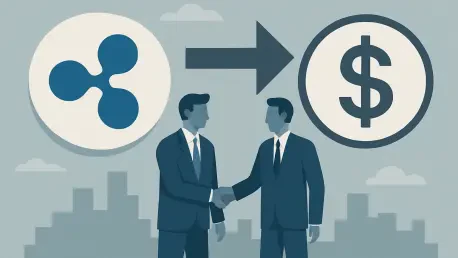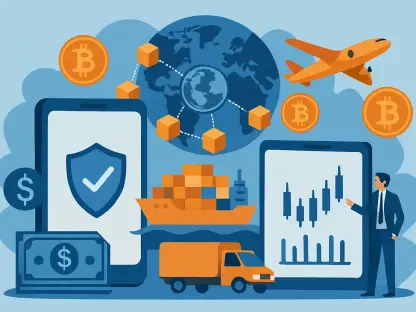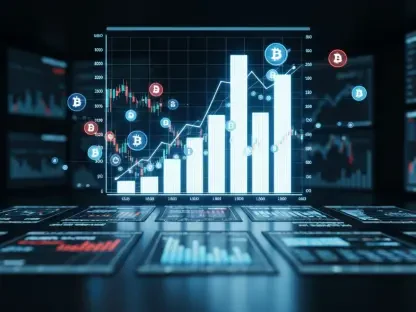I’m thrilled to sit down with Priya Jaiswal, a renowned expert in Banking, Business, and Finance, whose deep insights into market analysis and international business trends have made her a trusted voice in the cryptocurrency space. Today, we’re diving into Ripple’s recent acquisition of Rail, a Toronto-based stablecoin platform, for $200 million, alongside other major moves by the company this year. Our conversation explores Ripple’s strategic vision, the growing role of stablecoins in modern finance, and the impact of recent regulatory developments on their trajectory. Let’s get started!
Can you walk us through the motivations behind Ripple’s $200 million acquisition of Rail, and what unique strengths this Canadian stablecoin platform brings to the table?
Ripple’s acquisition of Rail is a strategic move to bolster its position in the rapidly evolving stablecoin and digital payments ecosystem. Rail has built a robust platform that specializes in settling international business payments using stablecoins, which is a game-changer for speed and cost efficiency. Their technology, including virtual accounts and automated back-office systems, offers Ripple a way to streamline payment flows for its global customer base. What stands out is Rail’s ability to handle a significant chunk of business-to-business payments—projected to be over 10% of a $36 billion market in 2025. This acquisition isn’t just about growth; it’s about integrating cutting-edge infrastructure to enhance Ripple’s offerings and make cross-border transactions smoother and more accessible.
How does Rail’s technology, particularly virtual accounts and automated back-office systems, enhance Ripple’s operations for its customers?
Virtual accounts are essentially digital representations of bank accounts that allow businesses to manage payments without needing physical accounts for every transaction or currency. They simplify the process of tracking and reconciling funds, which is a huge plus for Ripple’s clients who deal with complex, multi-currency payment flows. Meanwhile, the automated back-office infrastructure cuts down on manual processes like settlement and reporting, reducing errors and saving time. For Ripple’s customers, this means faster transactions, lower operational costs, and a more seamless experience when moving money across borders using digital assets. It’s about making the backend as efficient as possible so businesses can focus on their core activities.
Ripple’s President highlighted stablecoins as a cornerstone of modern finance. Can you unpack what this means and why stablecoins are so pivotal right now?
Stablecoins are digital currencies pegged to stable assets like the U.S. dollar, which makes them far less volatile than other cryptocurrencies. This stability is why they’re becoming a cornerstone of modern finance—they bridge the gap between traditional financial systems and blockchain technology. For Ripple, stablecoins represent a way to facilitate instant, low-cost transactions globally, which is critical for businesses and individuals alike. They’re seeing stablecoins as the future of payments because they offer reliability without sacrificing the benefits of decentralized tech. This perspective aligns with broader industry trends, especially as regulatory frameworks, like the recent Genius Act in the U.S., start to pave the way for wider adoption and innovative use cases.
How does the acquisition of Rail position Ripple to be a leader in stablecoin innovation and global payments?
By bringing Rail into the fold, Ripple gains access to a platform that’s already optimized for stablecoin-based payments, particularly for international business transactions. Rail’s tech allows for stablecoin pay-ins and pay-outs without requiring customers to hold crypto on their balance sheets, which lowers barriers to entry. This means businesses can use digital assets without needing dedicated crypto accounts or navigating centralized exchanges. For Ripple, which already operates one of the most widely used digital asset payment networks, this acquisition amplifies their ability to offer a one-stop solution for multiple payment types, from third-party transactions to internal treasury flows. It’s a bold step toward shaping the future of how money moves globally.
Ripple also made a $1.25 billion deal for Hidden Road earlier this year. Can you explain how these two acquisitions complement each other in Ripple’s broader strategy?
The Hidden Road acquisition was focused on expanding Ripple’s reach into prime brokerage services, which cater to institutional investors and high-volume traders in the crypto space. It’s about providing sophisticated financial tools and infrastructure to a specific, high-value segment of the market. When you pair that with Rail’s focus on stablecoin payments and operational efficiency, you see a complementary strategy emerging. Rail enhances the payment and settlement side for a broader business audience, while Hidden Road strengthens Ripple’s position with institutional players. Together, these moves create a more comprehensive ecosystem—Ripple can now serve a wider range of clients, from businesses needing efficient cross-border payments to big investors looking for robust trading and custody solutions. It’s a powerful combination that solidifies their foothold in global finance.
The resolution of the SEC’s legal battle with Ripple has been a significant milestone. Can you shed light on the key aspects of this case and how its outcome has influenced Ripple’s direction?
The SEC case against Ripple centered on whether XRP, their native token, should be classified as an unregistered security. It was a drawn-out, four-year battle, and in 2023, a federal judge delivered a mixed ruling: XRP sales on public exchanges didn’t violate securities laws, but sales to institutional investors did qualify as securities. Ripple was initially hit with a $125 million penalty, though a settlement under new SEC leadership saw $75 million returned. This resolution has been a huge relief for Ripple. With the legal uncertainty largely behind them, they’ve been able to refocus on innovation and expansion—evidenced by major deals like Rail and Hidden Road. It’s not just about clearing their name; it’s about rebuilding confidence with partners and customers, knowing they can operate without the constant shadow of regulatory overhang.
What’s your forecast for the future of stablecoins in global payments, especially with companies like Ripple driving innovation in this space?
I believe stablecoins are on the cusp of becoming a mainstream tool for global payments, and companies like Ripple are at the forefront of this transformation. With regulatory clarity slowly emerging—thanks to initiatives like the Genius Act—and growing acceptance from traditional financial institutions, stablecoins could redefine how we think about money movement. My forecast is optimistic: within the next five to ten years, we’ll likely see stablecoins integrated into everyday transactions, from business payments to remittances, at a scale that rivals traditional systems. Ripple’s recent moves, especially with Rail, position them to lead this shift by making stablecoin adoption easier and more practical for businesses worldwide. The key will be balancing innovation with compliance to ensure trust and stability in the ecosystem.









